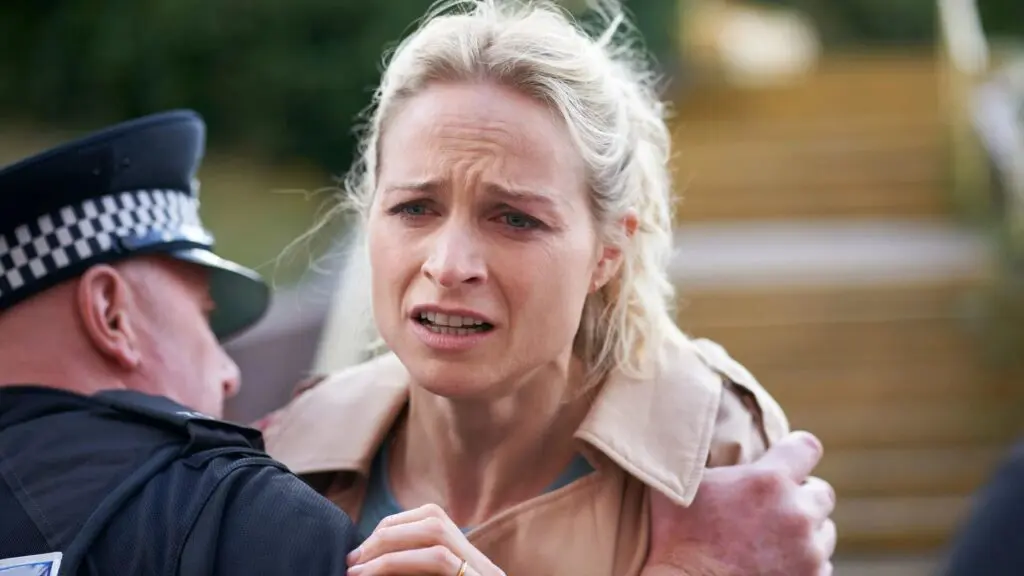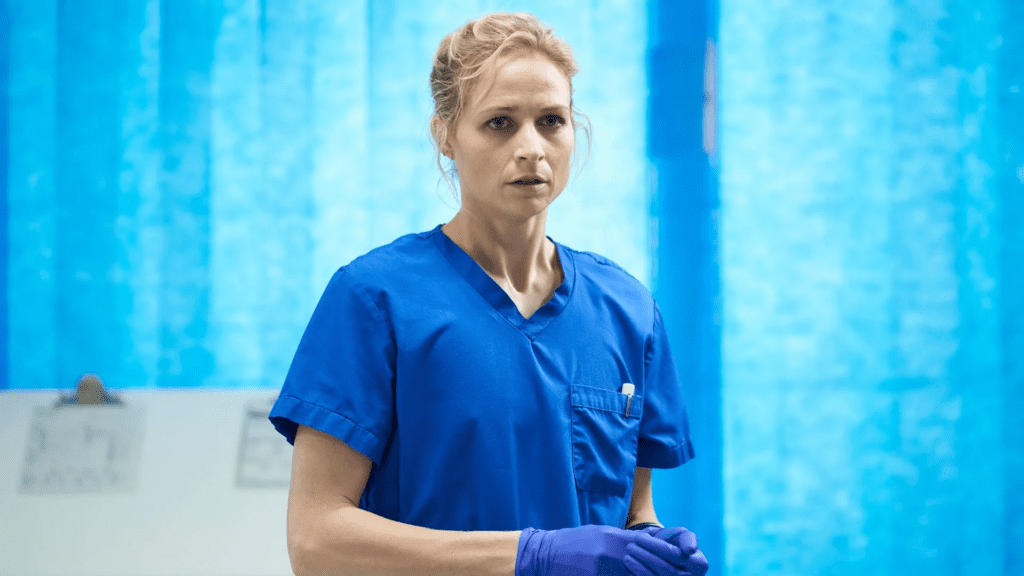Summary
Malpractice is a tightly plotted drama that might strain credulity towards the end, but it still provides a damningly well-observed portrait of the NHS and post-pandemic healthcare.
Post-pandemic entertainment is, similarly, distinct from pre-pandemic, especially in certain countries or across certain genres. An ITV/ITVX medical drama titled Malpractice, set in a West Yorkshire hospital, and focusing on a floundering NHS beset by overworking, underfunding, and – eventually, across five episodes – an outright conspiracy, was inevitably going to be informed by the pandemic in one way or another.
But the series, written by Grace Ofori-Attah with a finely observed sense of detail stemming from a decade of experience in the NHS but a surprising amount of dramatic complexity for a TV debut, isn’t so much about the pandemic as, again, informed by it.
The day-to-operations of the National Health Service occur, inevitably, in its specter, as the ramifications continue to be felt in layered and often unexpected ways.
Malpractice Season 1 Review and Plot Summary
The surface-level plot of Malpractice is, as the title implies, focused on a tragic and preventable loss of life that warrants an investigation into the competency of Lucinda Edwards (Niamh Algar), an A&E doctor who is forced to hand an overdose victim off to an inexperienced junior doctor whose inability to follow Lucinda’s instructions results in the young woman’s death.
But there’s more to it. The incredibly tense premiere highlights the NHS buckling under the strain of unavoidable circumstances. A&E is teeming, Lucinda can’t be in two places at once, an incident with a gunman and a gunshot victim demands immediate attention, and the young woman, Edith, falls through the cracks. These things happen.
But Edith’s father is adamant that negligence is to blame. Were Lucinda’s instructions to the junior, Ramya (Priyanka Patel), clear? Was Ramya too inexperienced to be in that position in the first place, and if so, after 18 months, why hadn’t she been adequately trained? Why did Lucinda change Edith’s notes to rule her suicide as deliberate rather than accidental? Why did she respond so hostilely to the mistake?
It’s a lot to take in, and as the episodes progress, it quickly becomes clear that Malpractice is as much a thriller as it is a medical drama, or even an examination of post-pandemic conditions in the NHS. Lucinda, under investigation herself, begins conducting her own inquiries, and the show itself interrogates the precise circumstances that led to and facilitated Edith’s untimely demise.
Is Malpractice worth watching?
Malpractice, thankfully, never becomes preachy. It has a frank understanding of the strain the NHS is under thanks to Ofori-Attah’s first-hand experience, and it isn’t afraid to call out what is causing that strain, but it’s also careful not to point the finger too directly. All its characters are flawed, sometimes unlikeable, and forced to navigate a broken system in their own way.
Those flaws are especially paramount since the tension of the series rests on a relatively simple question – was negligence the cause of Edith’s death? – exposing how impossible it is to provide a simple answer in the face of unprecedented public health crises, corruption, biases, bureaucracy, and the reticence of anyone involved to assume personal responsibility.
In a series that offers no easy answers and threatens to veer – especially towards the end – into the realms of made-for-TV claptrap, it’s refreshing for the underlying point to remain so coherent. People, even doctors, are fallible. Mistakes happen, and sometimes people die because of them.
But this is the price we pay for a near-inhuman healthcare system that must still necessarily be staffed by human beings; that expects those who run it to bend without breaking under the weight of private interest and social collapse.
As unrealistic as some of the late-game twists might be, the most implausible thing of all is the idea that there isn’t more truth here than any of us would like to admit.
Malpractice Season 1 Ending Explained

Malpractice Season 1 (Credit – ITV)
So, in episode 5, after being suspended from the hospital, Lucinda had gone straight to Jubair to replace Rob in his role writing prescriptions for rich addicts.
However, she was secretly recording him, and she takes this information to George and Norma. It isn’t much good on its own, but it’s a start.
Jacinda also goes to Eva, who tells her that she suspects there is an entire operation above Jubair. She was indeed funnelling clients to him through her rehab clinic, justifying it on the basis that the entire system is a revolving door anyway and she can count on one hand how many people she has truly “cured” of their addiction.
Why were the opioid prescriptions killing people?
But Rob was careful with his prescriptions. He wasn’t trying to kill anyone, and the spate of recent overdoses from the opioids he was prescribing were a red flag even to him. When he raised it with Jubair, though, he was threatened and forced to continue.
This leads Lucinda to believe that there is something wrong with the fentanyl batch. She acquires some leftovers from Milo, the patient she saved earlier in the season, and runs the batch number. This leads her back to the hospital, where she cross-checks the batch with Oscar’s audit. They had been written off as waste for being too strong.
As we learned earlier, the hospital’s waste drugs are given to a charity which distributes them among third-world countries, which leads to the obvious conclusion that there’s a leak in the pipeline. Waste drugs from the hospital are being funnelled back out onto the streets by Jubair’s Wellspring pharmacy chain, made available to wealthy addicts who can afford to pay for the prescriptions signed off by GPs like Rob.
Dr Willett, though, isn’t willing to hear this when Lucinda takes her suspicions to him. Instead, he calls her a junkie and has her removed from the premises.
Does Lucinda die at the end of Malpractice?
For ratting on his operation, Jubair has Lucinda set up. Camilla calls her in a panic, telling her that her friend has overdosed on the fentanyl she prescribed. When Lucinda gets there, though, she’s ambushed by Jubair and two other men, held down, and forcibly injected with a large dose of oxycodone.
When Lucinda is taken to A&E – we’re not sure how she got there but the implication is that Camilla called an ambulance – she’s on death’s door, but is saved by the quick thinking of Ramya, who gives her diazepam despite her addiction.
Lucinda survives, and when she wakes up, George and Norma deliver some good-ish news. Eva has confessed everything to them, including planting the incriminating prescription on Lucinda. Now, the MIU doesn’t just believe Lucinda, but they’re actively looking into the operation.
Who is behind Developing Aid?
Now we know that the drugs are being diverted from the hospital’s waste supply, it becomes obvious that the charity they are being donated to, Developing Aid, is responsible for putting them back on the streets.
In the final big twist of the season, it is revealed that Leo is one of Developing Aid’s four founders. He had hidden his status as a trustee because he was ordering more prescription drugs than the hospital needed, funnelling them to Developing Aid, and covering it up in his audits. (This adds a bit more context to the conversation about auditing that Leo had with Oscar earlier. Now we know why he was so interested.)
But Leo’s busted. He has been receiving regular payments into an offshore account, and there’s enough evidence with Eva’s testimony – though she’s also arrested – to nail him to the wall. He’s led out of the hospital in handcuffs.
Who kills Jubair?
In the aftermath of all this exposure, Jubair tries to pack up and leave in a hurry. However, he’s stabbed and killed by Yussuf, who you’ll recall is the gunshot victim from the premiere who has cropped up a couple of times since, mostly developing a friendly relationship with Lucinda. His getaway driver is the gunman who brought him into the hospital and held up Lucinda in A&E.
This is all the confirmation we need that there is a level above Jubair. It was also obvious in the scene where Lucinda is forcibly given an overdose; the two thugs present were ordering Jubair around. We don’t learn anything more about the real string-pullers though.
What happens in Lucinda’s tribunal?
We don’t get to see Lucinda’s tribunal, but in a flurry of conversations just prior to it, Lucinda decides to confess to her diazepam addiction and accept whatever consequences are coming her way.
Now that Lucinda has admitted she needs help, one assumes that she’s able to patch up her relationship with Tom, and with Norma’s defence, she may even be able to keep her job (at least if she can get clean.) However, this is left up in the air.
The big takeaway, though, is that Lucinda developed her addiction to help her cope with the stresses of a job that has cost her almost everything.
What did you think of Malpractice Season 1? Comment below.




